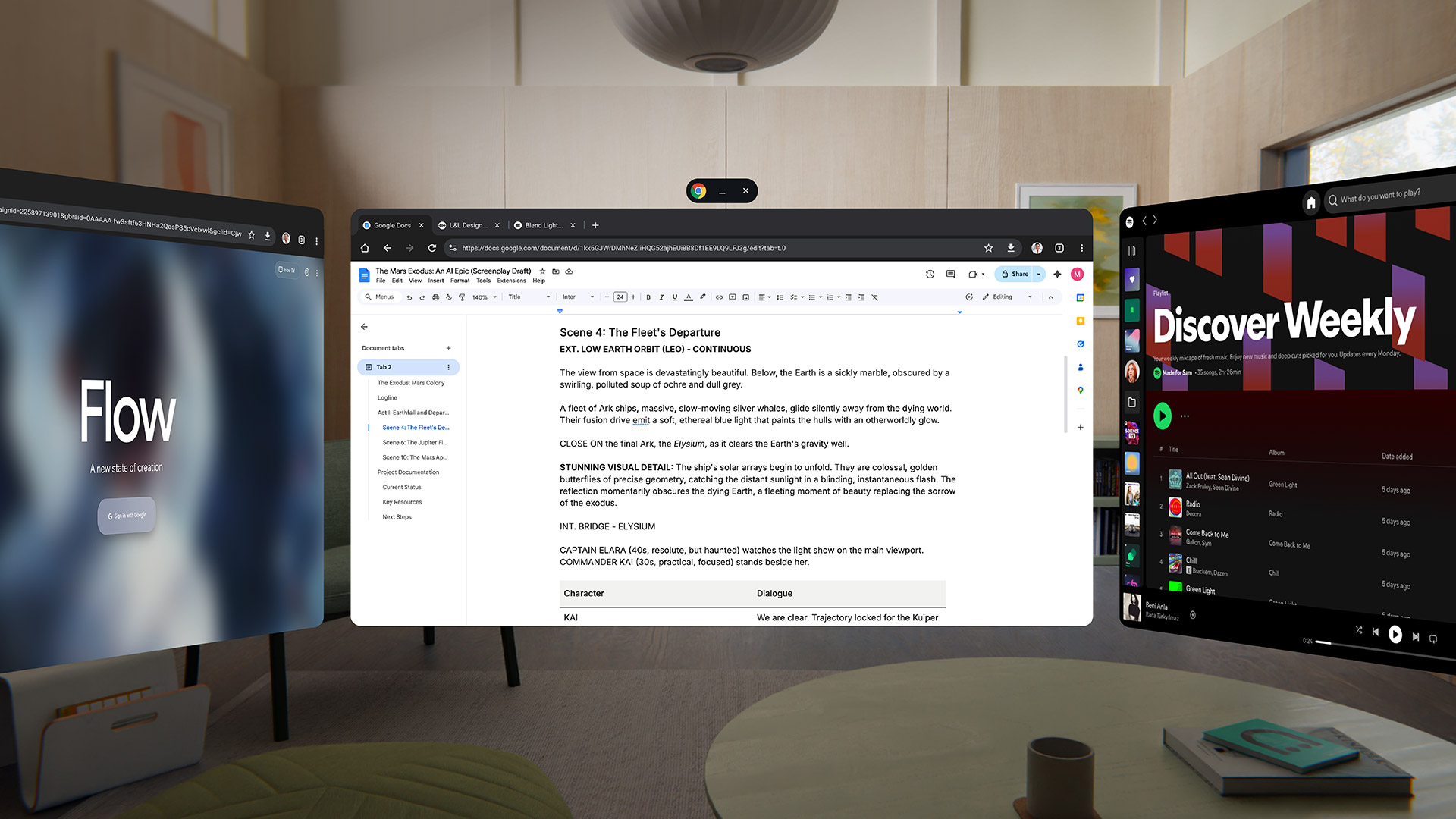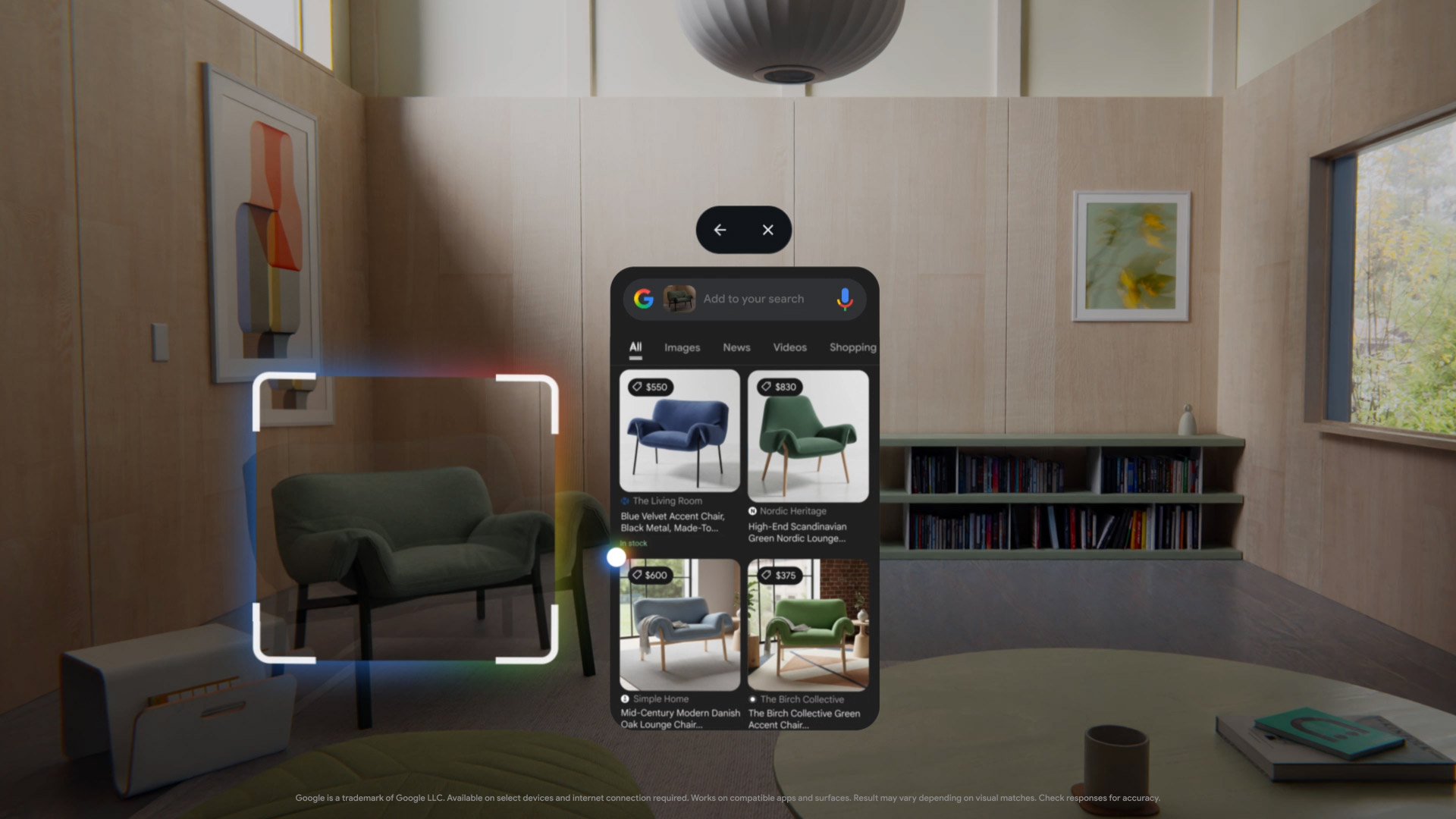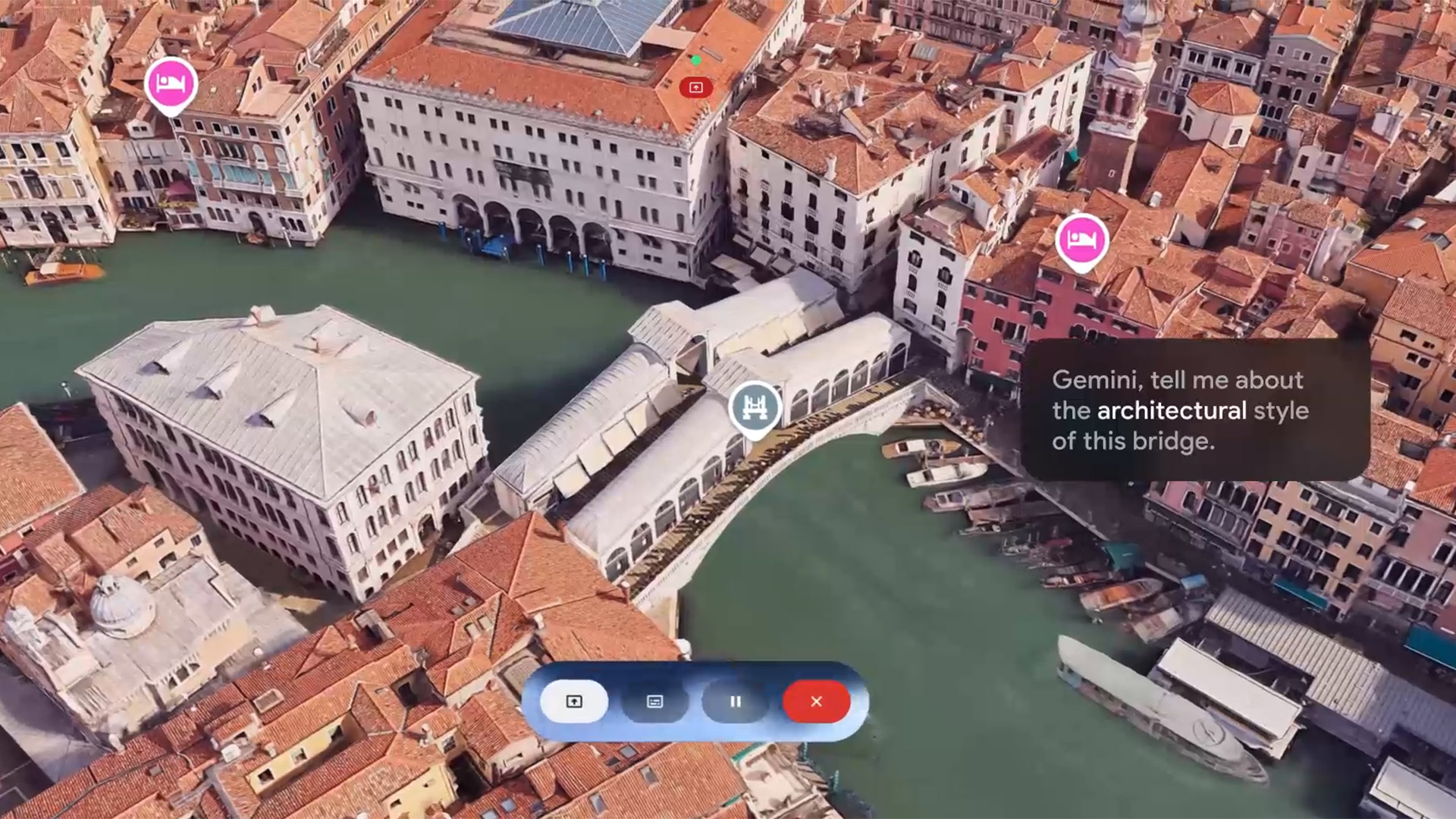Sponsored by Samsung
AI is changing how we view the world in these 6 ways
Wearable headsets are more than just smart lenses, especially when you add AI

Augmented reality headsets used to be the preserve of science fiction films, from the Neural Visor worn by Geordi La Forge, the ship’s engineer in Star Trek: The Next Generation, through to more radical biological upgrades such as Neo’s hard-wired neural jack in The Matrix or the retinal interfaces of Minority Report.
But now they’re crossing over into actual reality, and they no longer cost a fortune. There’s a whole range of AR devices on the market that are finally within reach of the average consumer, with the potential to radically change how we interact with and see the world around us. From futuristic smart glasses to full wearable headsets, it’s AI that powers these devices, making them smarter, more responsive and more personal than anything those films imagined.
If you haven’t considered getting an AI-powered AR headset before, here are six ways they’re changing how we see the world, each one a reminder that the future we used to watch on screen is now something you can slip on and see for yourself.
1. Using pass-through modes
Perhaps the most exciting thing about AI-powered headsets is that they let you view the world with an extra digital overlay.
The most basic overlay is the interface you use to control the headset, a bit like the icons on your smartphone. The headset allows for various hand gestures to select actions, but you can often select an icon simply by looking at it. Cameras in the headset track your eye movements, so sometimes all you need to do is look at an app or icon as it floats in front of you.
Most AI-powered headsets have a pass-through mode, so you still see everything around you in the real world, just with a digital layer on top. You can also enter a fully immersive mode, where the background is replaced by a stunning 3D environment. Immersive modes are perfect for gaming, watching movies or live sports, all times when you don’t want to be distracted by reality.

2. Using multi-window viewing
One of the best things about AI-powered headsets is multi-window viewing. You’re not limited to seeing just one app at a time, so you can have several app windows open at once and arrange them however you like, using your actual surroundings as the backdrop.
So, you could be sitting in your front room and have the Notes app open alongside the Calendar app, bringing one forward toward you and placing the other farther away.
When you use an AI-powered headset like this, the world around you becomes your own personal canvas.

3. Exploring with AI-powered search
The latest AI-powered headsets go further and let you see the world with extra layers of information added, and Circle to Search is a perfect example.
Circle to Search has captured the imagination of almost everyone with an Android smartphone capable of running the latest AI features. You can use it anywhere. If you’re browsing a website, you simply draw a circle with your finger around an object to find out more via an AI overview. See a handbag you like? Circle it, and your phone identifies it and even shows where to buy it.
Of course, that means that if the headset you're using runs Android's new XR platform, you'll be able to use Circle to Search there too – except instead of drawing a circle on your phone, you'll be tracing one in the air around real-life objects you’re looking at. The headset will then identify the object and give you an AI overview, explaining what you’re seeing and suggesting follow-up actions.
So, if you see that handbag in real life, you can now use Circle to Search to identify its make and price simply by drawing an imaginary circle around it in the air.

4. Screen sharing with AI
Headsets that have an AI like Gemini at their core let you share your screen with Gemini Live, so the AI can also see exactly what you are looking at and answer questions about it using your voice, just as if you were chatting to a real person.
Watching live sports on YouTube? Once activated, Gemini Live can watch a bit of the game along with you, analyse both teams’ playing styles and answer any questions you have about them.
Or imagine you’re watching a movie and want to know more about an actor. Just fire up Gemini Live and ask it a question using your voice. You could even ask it, “Where is this film set?” and Gemini will tell you the likely location.
The possibilities are almost endless… which brings us to 360-degree city tours.

5. Immersing yourself in 360-degree city tours
Another great way to experience the world with an AI-powered headset is by combining it with Gemini Live and YouTube’s 360 immersion videos. YouTube is full of these 360-degree immersion videos, many featuring cities around the world, designed to let you literally look around. With a headset on you can look all around you in 360 degrees and the world remains consistent.
Load up one of these videos and it’s like being there. As you turn your head, you experience what it’s really like to stand in that spot, and Gemini Live is right there to answer any questions you have about what you’re looking at.
If you’ve always wanted to wander through Florence, Tokyo or Barcelona but never made the trip, this is your chance. Thanks to Gemini Live, you can take in the sights and learn about each destination from the comfort of your own home.
6. Losing yourself in 3D maps

We all love Google Maps – it’s still the easiest way to get from A to B or explore anywhere on the planet without leaving your seat.
With Gemini and a wearable headset added to the mix however, Google Maps comes alive. Can’t remember the name of that pizza restaurant next to the clock tower? Just ask Gemini, and it will bring up suggestions.
Even better, in a wearable headset you can fly over a city to see exactly where you need to go. It’s the closest thing to being Superman. Zoom in and out effortlessly for a whole new view of the world.
And of course, using Google Street View on an AI-powered headset gives you a fully immersive experience, just like those 360-degree city tours. You can even step inside some locations, such as restaurants, to see if the venue is exactly what you’re looking for.
The future is now
These are just a few of the things AI-powered headsets can already do, and we’ve not even touched on how headsets can turn every photo in Google Photos into a 3D image you can literally step into. Or you could add game controllers for extra fun, or link all your devices so you can take phone calls on your headset as easily as on your phone.
The line between science fiction and everyday tech is blurring fast. AI is the quiet engine behind these headsets, and the future isn’t just in front of us anymore. It’s all around us, alive with possibility.
Follow TechRadar on Google News and add us as a preferred source to get our expert news, reviews, and opinion in your feeds. Make sure to click the Follow button!
And of course you can also follow TechRadar on TikTok for news, reviews, unboxings in video form, and get regular updates from us on WhatsApp too.
Sign up for breaking news, reviews, opinion, top tech deals, and more.

Graham is the Senior Editor for AI at TechRadar. With over 25 years of experience in both online and print journalism, Graham has worked for various market-leading tech brands including Computeractive, PC Pro, iMore, MacFormat, Mac|Life, Maximum PC, and more. He specializes in reporting on everything to do with AI and has appeared on BBC TV shows like BBC One Breakfast and on Radio 4 commenting on the latest trends in tech. Graham has an honors degree in Computer Science and spends his spare time podcasting and blogging.